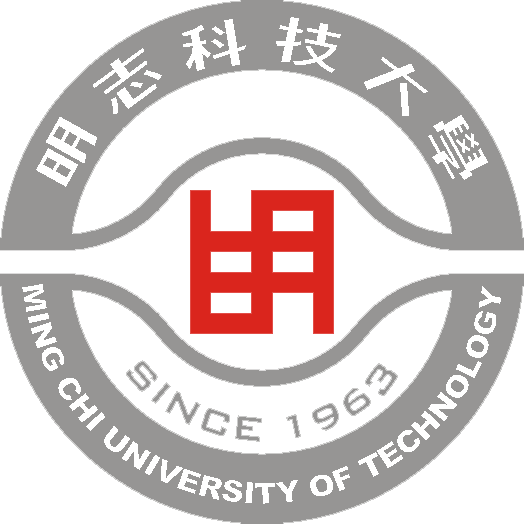Laboratory of Functional materials
Research Field
WORKING EXPERIENCE: Director of Ph.D. Program in Biomedical Engineering and Medical Devices, Ming Chi University of Technology, Taiwan (2019,08~current).
Vice director in Technology R&D Group of Research Center for Intelligent Medical Devices (2018,03~current).
Full Professor in Ph.D. Program in Biomedical Engineering and Medical Devices, Ming Chi University of Technology, Taiwan (2021,02~current).
Associate Professor in Ph.D. Program in Biomedical Engineering and Medical Devices, Ming Chi University of Technology, Taiwan (2019,08~2021,01).
Associate Professor in Department of Mechanical Engineering, Ming Chi University of Technology, Taiwan (2014,08~2019,07).
Assistant Professor in Department of Mechanical Engineering, Ming Chi University of Technology, Taiwan (2010,08~2014,07).
Ph.D. Program in Biomedical Engineering and Medical Devices/ Laboratory in Functional materials
My laboratory focuses on the functional materials. The following are my current research interests to share for you.
My team develops next-generation supercapattery device (i.e., the intergation of a Li-based battery and a hybrid supercapacitor) with the high-energy density from the battery-type material and the high-power density from the supercapacitor-type material. In the supercapacitor side, layered 2D MXene materials will be synthesized with activated carbon (AC) to form a hybrid MXene-AC composite as the novel and more potential electrode. On the other hand, in battery side, more portentail lithium-based oxides (e.g., Li4Ti5O12, LiFePO4, and LiCoO2) as the battery-type electrode. The approach of hybridizing supercapacitors and batteries can reinforce the properties of the two dissimilar systems offering opportunities for the next-generation energy storage devices. The hybrid supercapattery device with synergic effect (i.e., high power density, high energy density, and fast charging-discharging time) to enhance energy storage performances will likely be a developing roadway to offer opportunities for next-generation energy storage applications.
On the other hand, my team also develops dielectric capacitance with a fast charge-discharge time, high power density, fatigue resistance, and thermal stability, it can be developed as some applications such as hybrid electric vehicles, pacemaker, integrated circuit, laser weapon, electromagnetic gun, ion accelerator, plasma technology. We combine perovskite ferroelectric materials (BiFeO3, BaZrTiO3, NaTaO3, NaNbO3) and glass systems to produce a relaxor ferroelectric dielectric capacitors with optimized energy storage properties. The purpose of combining the perovskite relaxor ferroelectric ceramics and glass systems is to develop entropy configuration that offers attractive features identified to be phase-stabilization, sluggish diffusion, and lattice mismatch and distortion. The optimized compositions will be utilized for the process approach in fabricating the multilayer ceramic capacitor (MLCC) via the tape casting technique in order to maximize the superior energy storage properties in dielectric ceramics for actual industrial application. The process approach will focus in designing parallel MLCC device with large Wrec, high and Eb, fast charging-discharging time, excellent fatigue- and thermal-stability.
- Multiferroic functional ceramics.
- Energy storage, MXene, Activated carbon, Hybrid supercapacitor, Li-ion battery, Supercapattery device.
- Relaxor ferroelectric, Multilayer ceramic capacitor, Entropy configuration, Ferroelectric-glass composite,
- Biomaterials, Bioactive glass-ceramic, Bioresorbable materials, Composite bone graft.
- Metals and alloys.
- Analysis technologies: X-ray diffraction (XRD) & Rietveld-refinement analysis, scanning electron microscopy (SEM), Transmission electron microscopy (TEM), Scanning probe microscopy (SPM), Micro-Raman scattering.
論文發表(Publications):
近五年內(2020-迄今)共發表SCI論文42篇
https://scholar.google.com.tw/citations?hl=zh-TW&user=dIt-S_0AAAAJ&view_op=list_works&sortby=pubdate
國科會計畫:
近五年(2019-2024)主持6案,共1029.7萬元(含多年期計畫2案)
產學計畫:
近五年(2019-2024)主持11案,含產學技轉金共627.5萬元
獲獎與人才培育:
1. 2023年10月參加台灣創新技術博覽會Taiwan Innotech Expo獲得銀牌獎。
2. 2023年11月參加國科會工程處產學合作成果考評會獲得簡報組特優獎。
3. 2022 帶領生醫骨材團隊-明志拓鴻途隊參加科技部創新創業激勵(FITI) 入圍前 20 強團隊與 AIPLUX-IP 潛力獎。
4. 近五年(2018~2022)指導學生參加國際與國內各種競賽獲獎共18次,如中國材料科學會海報競賽特優獎、台灣陶瓷學會年會學生博士論文競賽第一,二名、碩士論文競賽第一,三名與多次佳作獎、台塑企業應用技術研討會研發論文暨海報競賽等。
5. 實驗室培養出來研究生皆能前往產業界學以致用,例如台化公司(材料破損分析),台積電(製程研發),詠業科技公司(壓電元件與天線)、道登電子公司(LTCC 微波 5G 介電材料,高低溫導電膏)。
Doctor of Philosophy (Ph.D.) in the Department of Mechanical Engineering, National Taiwan University of Science and Technology (NTUST), Taiwan
